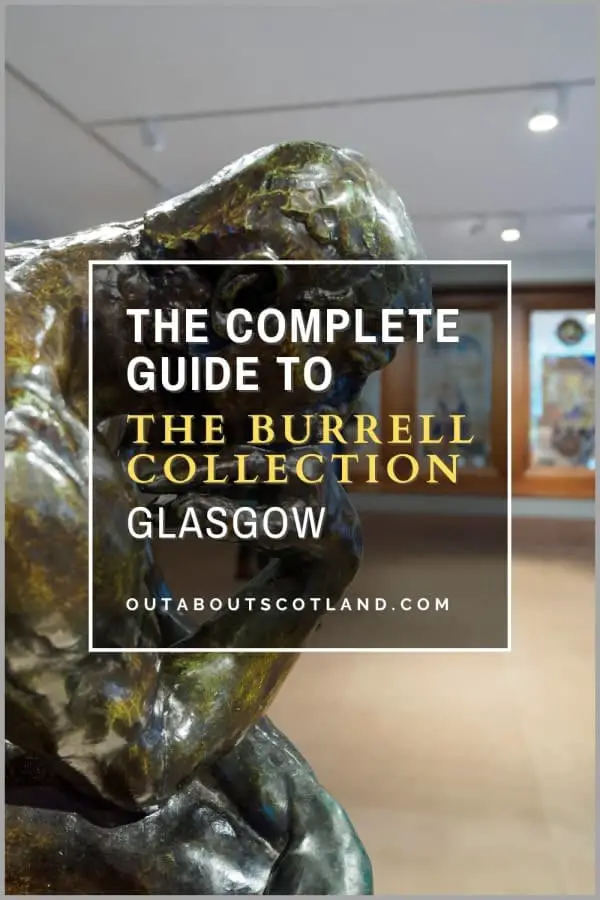The beautiful 12th-century cathedral is the oldest building in Glasgow, and it’s the most complete mediaeval cathedral on the Scottish mainland. The cathedral is open to the public daily and is easy to find thanks to its central location between the Glasgow Necropolis and the St. Mungo Museum in the city’s East End.
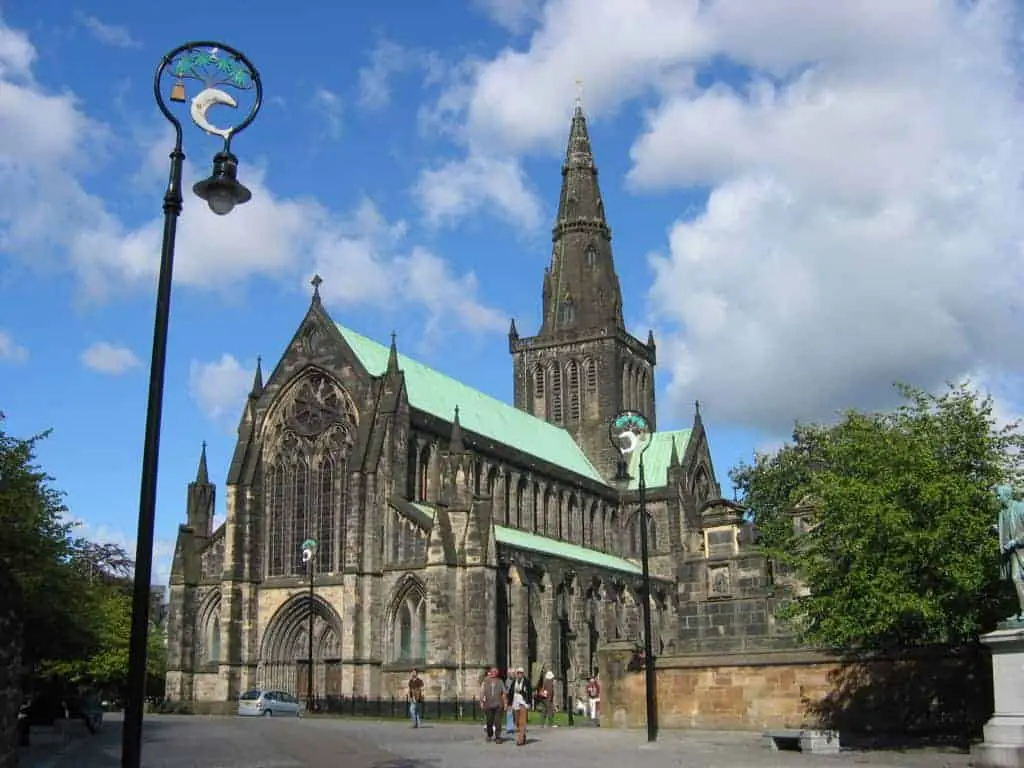
| Address: | Castle Street, Glasgow, G4 0QZ |
| Opening Hours: | 1 Apr to 30 Sept: Mon to Sat, 10 am to 5 pm Sun, 1 pm to 5 pm Last entry 4.30 pm 1 Oct to 31 Mar: Mon to Sat, 10 am to 4 pm Sun, 1 pm to 5 pm Last entry 4:30 pm Closed for lunch 12 noon to 1 pm |
| Admission Price: | Free |
| Parking: | Paid car park on Castle Street |
| Contact: | 0141 276 1614 |
| Facilities: | Shop, disabled access. Toilets at the St. Mungo museum. |
| Photos: | Virtual Tour YouTube Video |
Overview
Glasgow Cathedral is widely considered one of the top tourist destinations in the city, alongside the nearby St. Mungo Museum of Religious Life and Art and The Glasgow Necropolis. The mediaeval cathedral was built in dedication to St. Kentigern (also known as St. Mungo) in the 1100s and it has survived almost completely intact through 900 years of religious upheaval and world wars. In fact, it’s one of the most complete mediaeval buildings in Scotland.
The cathedral would have been absolutely awe-inspiring when it was first built, and it’s still impressive in modern times thanks to its dramatic Gothic architecture and ornate stone carvings.
But it’s the interior that’ll really get your camera trigger-finger going into overdrive because it’s such a beautiful place, and I have to admit it’s one of the few buildings I’ve visited that actually made me stop and stare as soon as I walked through the main entrance. Think ‘mini York Minster’ and you’ll have a good idea of what I’m talking about.
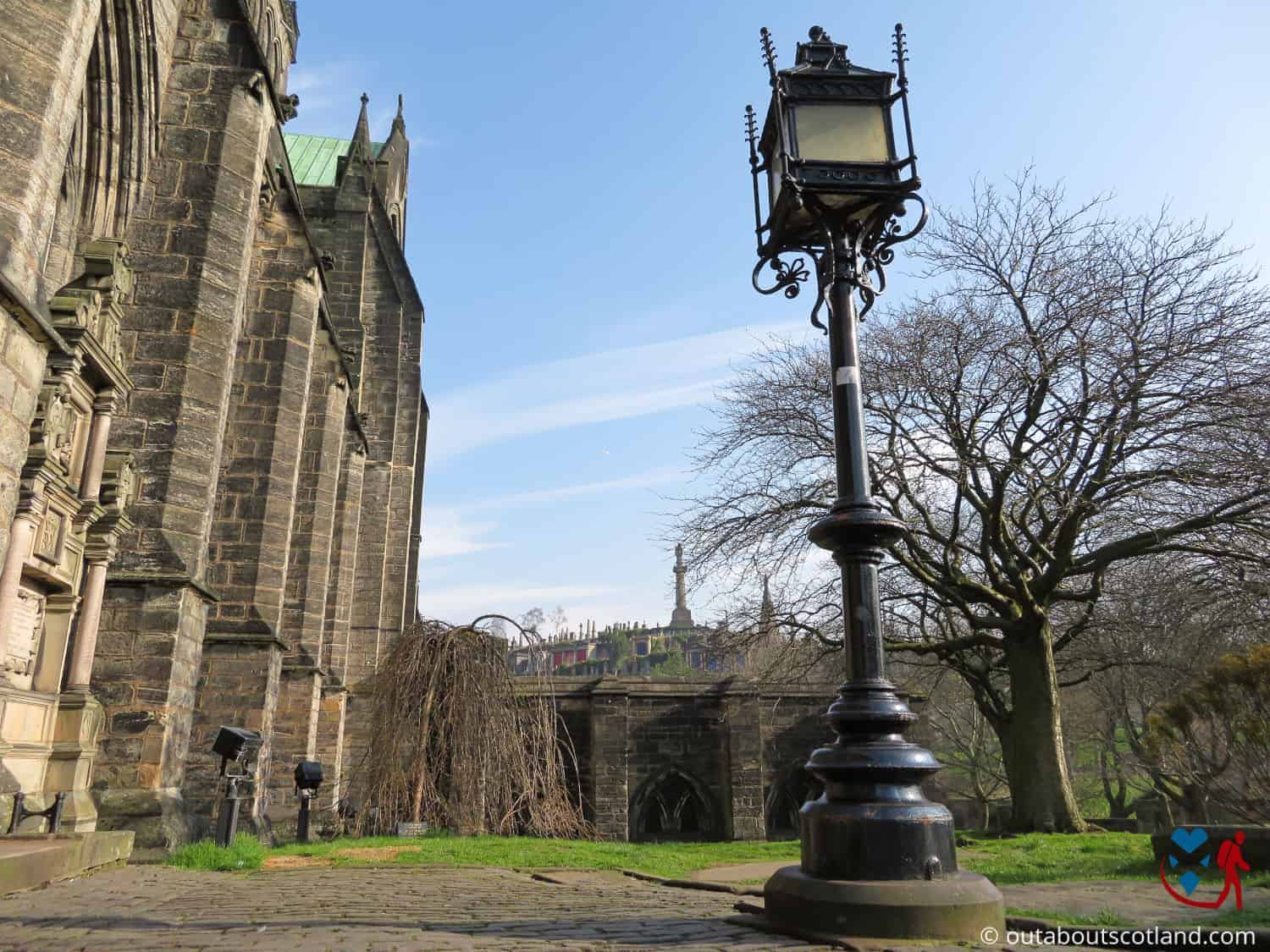
There are lots of nooks and crannies to explore when you visit Glasgow Cathedral so children will be kept occupied just as much as adults, especially down in the crypt that contains the remains of St. Kentigern. It’s a very atmospheric place, and Historic Environment Scotland (HES) has installed lots of information panels and displays so you can discover the history behind the cathedral and the saint for yourself.
Perhaps the best thing about a visit to this part of Glasgow is that it’s close to other attractions that are just a short walk away. First, there’s the sprawling expanse of The Necropolis, a Victorian garden cemetery that contains a collection of graves that are the final resting place for many famous Scots. Second, there’s the St. Mungo Museum of Religious Life and Art which showcases religious exhibits and artefacts from across the globe.
Tourists will enjoy exploring these attractions even if they’re not remotely interested in history, and seeing as all of them are completely free to visit, they should definitely be included in every Glasgow sightseeing itinerary.

Book Tours in Scotland
The Highlights
1: Glasgow Cathedral is an outstanding example of Scottish Gothic architecture and is the only mediaeval cathedral on the Scottish mainland to have survived the Reformation of 1560 intact. Visitors can marvel at the stunning stained-glass windows, the impressive stone carvings, and the cathedral’s overall majestic presence.
2: Beneath the cathedral’s choir lies the Lower Church, which contains the shrine of St. Mungo, where the saint’s tomb is thought to be located. This atmospheric crypt is one of the most ancient parts of the cathedral and is incredibly atmospheric.
3: Adjacent to Glasgow Cathedral is the Victorian Glasgow Necropolis, a sprawling and historic cemetery situated on a hill with panoramic views of the city. This ‘city of the dead’ is home to an impressive collection of monuments, tombs, and mausoleums, many of which are very ornate and architecturally significant in their own right.
Visiting Tips
1: There are no public toilets on-site, but you can use the ones in the St. Mungo Museum. Be aware it’s closed on Mondays, so the other nearest public toilet is behind the Provands Lordship building.
2: Glasgow Cathedral is a working church with regular worship services. If you wish to explore the cathedral without the restrictions of a service, it’s best to check the service schedule on the website before you go.
3: To truly appreciate the historical and architectural significance of Glasgow Cathedral, consider joining a guided tour. These are usually free and provided by knowledgeable volunteers who share information about the cathedral’s history, architecture, and the stories behind its stained glass and other features.
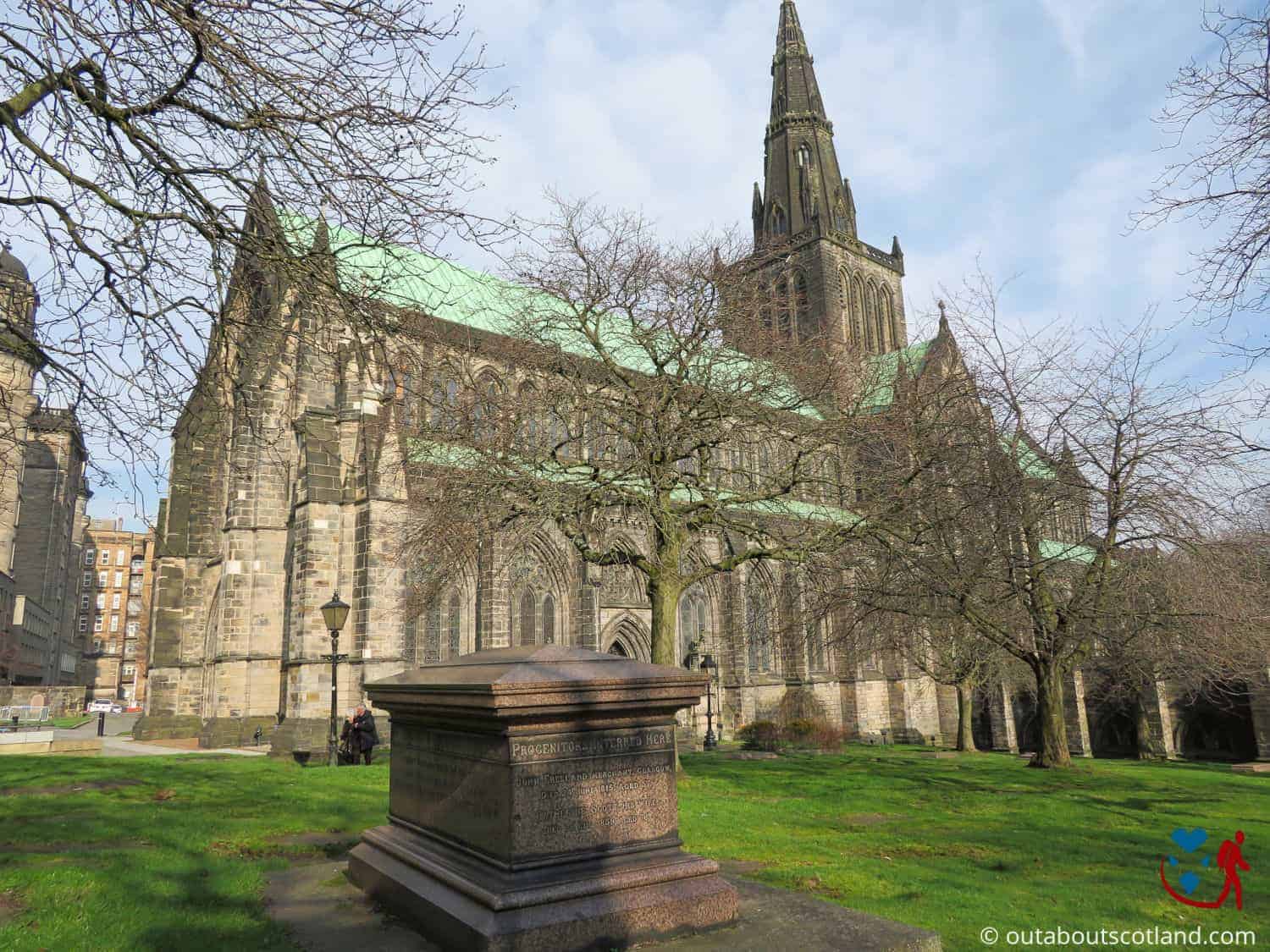
Protect Your Family From Scotland's Biting Midges
- Powerful, reliable protection for up to 8 hours
- Water- and sweat resistant
- Repels midges, mosquitoes, horse flies, sand flies, fleas and ticks
- Safe for use on adults, children over 30 months and pregnant women
- Non-sticky, moisturising with a pleasant fragrance
- Packaging may vary
Tourist Information
If you love history and architecture you’ll be in your element at Glasgow Cathedral, and I guarantee you’ll enjoy walking around the enormous building with your camera in hand (but bear in mind you’re not allowed to use a flash).
I wouldn’t normally recommend parents take their kids to places like this because there’s a good chance they’ll quickly get bored, but Glasgow Cathedral is big enough that they can have a good romp around it, and the information displays are genuinely interesting if they’re at the age where they can understand them. That being said, I think children under 10 will be looking to go elsewhere after they’ve seen the main hall and the crypt, although there are lots of points of interest for adults.
There are frequent exhibitions about a range of topics in the main hall in addition to the cathedral’s information panels, so you’ll hopefully find something of interest whether you’re interested in history or not.
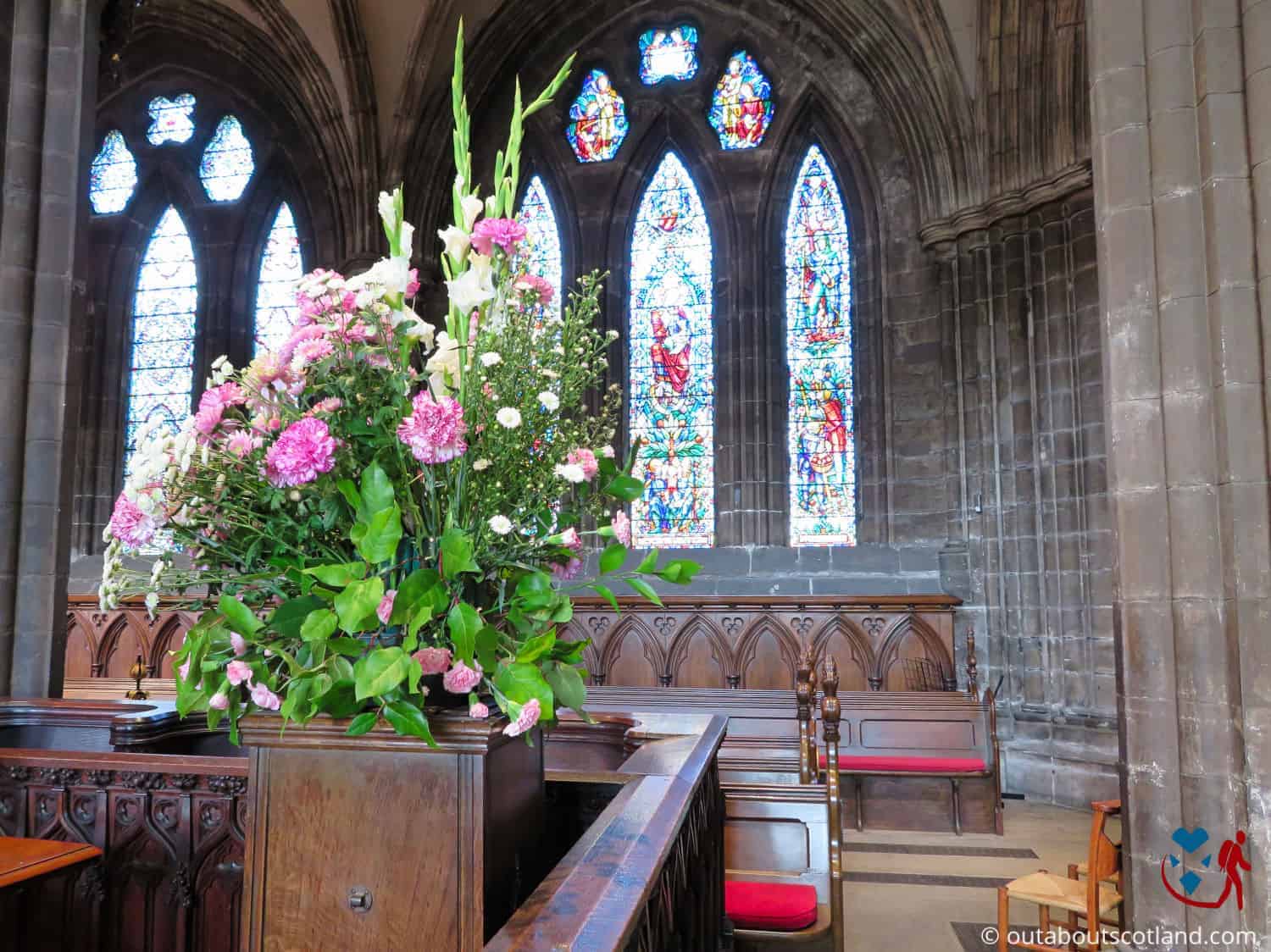
Other highlights are the Blacader aisle ceiling that’s studded with brightly painted stone bosses and the lower-level shrine of St. Kentigern that’s dimly lit and extraordinarily atmospheric. You’ll also find a collection of stained-glass windows and monuments to look at which are best seen as part of a guided tour.
If you’re not interested in guided tours you can just as easily walk around at your own pace, which shouldn’t take much more than half an hour, though you could stretch it out to an hour if you read all the information panels. There’s a small shop near the entrance that sells guidebooks and souvenirs but there’s no café, so if you’d like a coffee and a snack you’ll have to pop next door to the St. Mungo Museum.
Finally, although there’s no fee to get into the cathedral, there are donation boxes near the entrance, so you might want to drop a few quid into them on your way out to help keep this beautiful building open to the public for many more years to come.
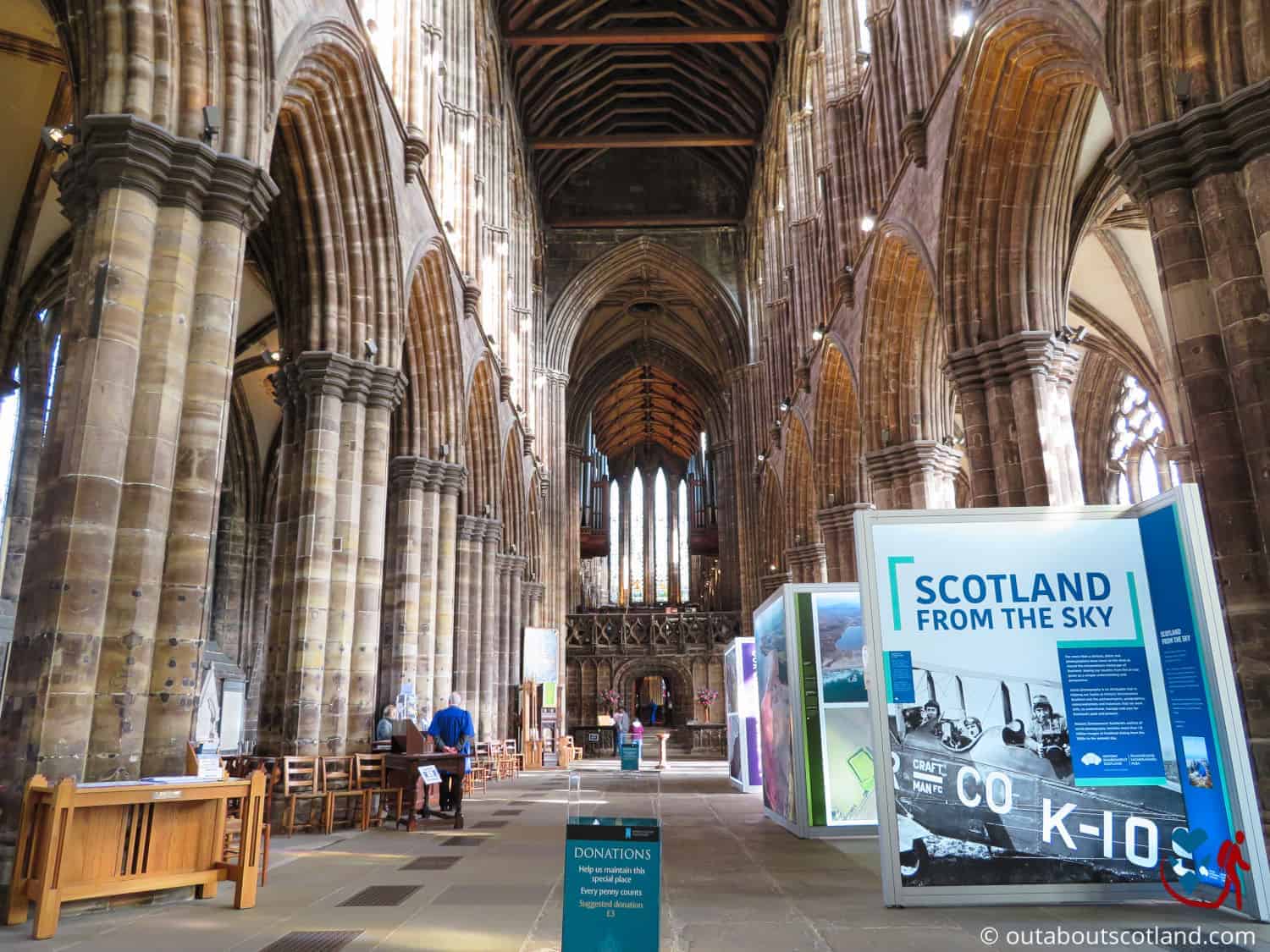
History
It has been said that Glasgow was built around its cathedral, and it’s certainly true that geographically, the building is situated in the heart of the city. The cathedral was originally built on the site of a shrine dedicated to St. Kentigern who was the first bishop of the area that we know today as Strathclyde.
St. Kentigern is believed to have been buried on the site in AD 612, but the actual building that we see today was built sometime in the late 1100s. Over time, a precinct grew around the shrine to house the clergy that worshipped at the site, and this, in turn, attracted tradespeople and shopkeepers to the area.
The cathedral was completed in the mid-1200s and continued to serve as the centre of the ever-expanding city until the Reformation in the 16th century when Scotland broke away from the Catholic Church and no longer needed bishops. Glasgow Cathedral continued to be used as a place of worship after the Reformation but was separated into three parish kirks, and it’s still used as an active place of worship to this day.

Book Tours in Scotland
Things to Do
Explore Glasgow Cathedral. Start your journey by exploring the stunning 13th-century architecture of the cathedral. It’s the only mediaeval cathedral on the Scottish mainland that survived the Reformation completely intact. Admire the intricate stained glass windows, the awe-inspiring ceiling, and the beautiful stone carvings.
Relish the cathedral’s rich history: Take a guided tour to truly understand the cathedral’s rich history. Learn about the life of St. Mungo, Glasgow’s patron saint, and how he performed miracles in the city. Discover the crypt where St. Mungo is said to be buried and wander through the cathedral’s enormous nave.
Attend a service: Experience the spiritual aspect of Glasgow Cathedral by attending a service. The choir and organ music is spectacular and something worth experiencing even if you’re not remotely religious. Check their website to see if a service coincides with your visit.
Visit the St. Mungo Museum: Just beside the cathedral, you’ll find this unique museum dedicated to all the world’s major religions. Discover a Zen garden, a Dali masterpiece, and a wealth of artefacts providing insight into the world’s faiths.
Wander through the Necropolis: This Victorian cemetery, located on a hill to the east of the cathedral, offers panoramic views over the city. Take a peaceful stroll amongst the grand monuments, which pay homage to the people who shaped the city into what it is today.

Things to Do Nearby
George Square. Glasgow G2 1DH. 16-minute walk.
Glasgow’s principal civic square is located in the heart of the city, next to the Grand City Chambers. This historic square was laid out in 1781 and is ringed with statues of famous Scots.
St. Mungo Museum of Religious Life and Art. 2 Castle St., Glasgow, G4 0RH. 1-minute walk.
A free-to-visit museum located next to Glasgow Cathedral. This museum features a collection of religious-themed artefacts, paintings, and exhibits from all over the world. There is a café and gift shop on site.
The Necropolis. Castle St., Glasgow, G4 0UZ. 3-minute walk.
The Necropolis is a large Victorian cemetery located behind Glasgow Cathedral. Many footpaths wind their way around the 37-acre site, and entry is completely free.
Provand’s Lordship, 3 Castle St., Glasgow, G4 0RH. 2-minute walk.
This museum is situated inside one of only four mediaeval buildings that survive in Glasgow. Built in 1471, Provand’s Lordship is furnished with a collection of 17th-century furniture and portraits. Entry is free.
The Glasgow Police Museum. First Floor, 30 Bell St., Glasgow, G1 1LG, 13-minute walk.
This independent museum is dedicated to Britain’s first police force. There are exhibits of clothing and police memorabilia, and knowledgeable staff are on hand to answer any questions. Entry is free, but donations are welcome.
Protect Your Family From Scotland's Biting Midges
- Powerful, reliable protection for up to 8 hours
- Water- and sweat resistant
- Repels midges, mosquitoes, horse flies, sand flies, fleas and ticks
- Safe for use on adults, children over 30 months and pregnant women
- Non-sticky, moisturising with a pleasant fragrance
- Packaging may vary
Frequently Asked Questions
Is Glasgow Cathedral free to visit?
Glasgow Cathedral, also known as St. Mungo’s Cathedral, is free to visit. However, there may be certain events, exhibitions, or concerts that require an entry fee.
Is Glasgow Cathedral Protestant or Catholic?
Glasgow Cathedral was originally Roman Catholic but changed to the Church of Scotland following the Reformation of 1560.
What is the Glasgow Cathedral famous for?
Glasgow Cathedral is the most intact mediaeval cathedral on the Scottish mainland and the only cathedral to have survived the Scottish Reformation. The cathedral was founded around the shrine of St. Kentigern, who is said to have built a church on the site in the 6th century.
Is St. Mungo buried in Glasgow Cathedral?
Yes, Saint Mungo, also known as Saint Kentigern, is buried in Glasgow Cathedral. Saint Mungo is the patron saint and founder of the city of Glasgow, and the cathedral, also known as the High Kirk of Glasgow, St Kentigern’s, or St Mungo’s Cathedral, is dedicated to him. His tomb is located in the lower crypt of the cathedral.







